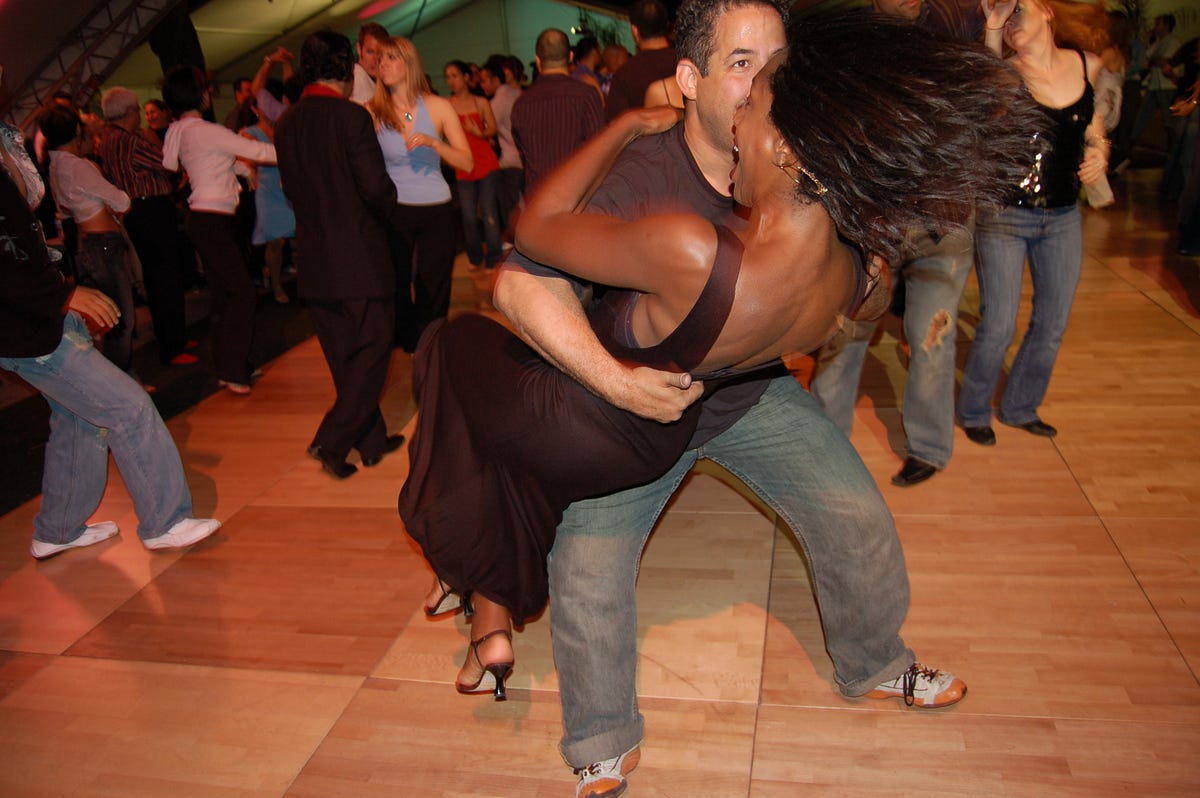About Dance Fridays
Wiki Article
See This Report on Dance Fridays
Table of ContentsThe Of Dance FridaysThe Ultimate Guide To Dance FridaysSome Ideas on Dance Fridays You Need To KnowA Biased View of Dance Fridays
Let's consider Salsa dancing and songs as a huge Tree that looks like this: Salsa is danced world-wide while lots of technical elements of the dance coincide across designs (6 steps over 8 beats danced on a quick-quick-slow or slow-quick-quick rhythm), there are a number of "hallmark" functions of the major styles of Salsa that identify one from the other.Couples joining a Casino Rueda dance all actions in unison as called by a Leader. Distinguishing features of Cuban design salsa are round turn patterns (with "break back" actions on matters 1 and 5) as well as body movement influenced by traditional Afro-Cuban folkloric dancings. Distinguishing attributes of Cali design salsa is fast and intricate footwork, danced with a solid hand hold connection in between partners.
The beginnings of the style are a subject of argument, however it is claimed that New York style Salsa dance stemmed in the 1960's due to the influx of Latin American emigrants after the Cuban Transformation. Eddie Torres is one of the most popular New York style dancer, being nearly globally credited with popularizing the style to dance centres outside of New York.
The fundamental rhythm of "On-2" is slow-quick-quick. The "youngest" of the styles of Salsa, L.A. Style (some individuals have actually called it "West Coastline" design) came to be preferred in the 1990's and has its beginnings in ballroom (Mambo, Swing and Cha, Cha, Cha). Transform patterns lead and adhere to techniques are greatly affected by these designs, with the Cross Body Lead being the keystone of the design.
More About Dance Fridays
Style are implementation of turn patterns and numbers in the "slot", with the break steps on matters "1" and "5". This design is likewise characterized by fancy and often intricate arm designing by the comply with to accent the "1" and "5" matters. The basic rhythm of "On-1" is quick-quick-slow. While Salsa songs has solid origins in Cuban, Colombian and Puerto-Rican folkoric traditions, it can not be marked down that all Afro-Latin and Latin American cultures have added to modern Salsa music as we recognize it today.It's possible that as a result of political factors the contribution of Afro-Cuban culture and heritage to modern Salsa in the 1960's and 70's is not extensively recognized, but it can not be neglected the huge contribution and influence of the "Queen of Salsa", Celia Cruz. A family name in Cuba and the Central Americas as a vocalist in the 1950's, Celia left Cuba for the U.S

Today Salsa music is produced, performed and popular global. In 2000 the impact of Latin American music and culture (not simply Salsa) was recognized by the National Academy of Recording Arts and Sciences in the United State and the Latin Grammy Honors were produced. The Latin Grammy's have brought focus to the Salsa Legends and contemporary Salsa artists alike
How Dance Fridays can Save You Time, Stress, and Money.
identifying characteristics of Salsa songs are: 4/4 measure signature, Child Clave and Tumbao rhythms, Montuno Piano Unless you have a background in songs, the above 3 qualities most likely mean absolutely nothing to you. A much easier way to explain Salsa songs is how it does NOT appear like various other sorts of Latin American preferred songs.Bachata is a straight 4 beat dance with a prevalence of a syncopated guitara line and a clear absence of any "difficult" piano, brass (trumpet, trombone) lines. Cha, Cha, Cha appears like Salsa songs the most as it seems like "truly slow-moving" salsa/mambo. salsa club san francisco. Cha, Cha, Cha can be distinguished by it's emphasis of the double tumbao beat on matters 4 +5 and 8 +1 (the "cha-cha-cha") You have actually been to a Salsa evening at a club and you're hooked you love the music, the power, the appearance of 2 professional dancers gliding across the dance floor implementing awesome spins and transform patterns
It's time for lessons. With so several studios out there and different styles to select from, where does a total novice begin? The majority of all new dancers select to discover L.A. "On-1" style slotted Salsa styles are one of the most prevalent in The United States and Canada (with some exceptions of some urban centres that still mostly accept Cuban and Puerto Rican designs) and L (https://giphy.com/channel/salsacrazysf1).A
.A. Design will quickly educate you the fundamentals of Salsa timing, weight transfer and turn pattern execution. Several professional dancers, once they've had a year or more of dance L.A. Design Salsa under their belts, "button" to New York style in order to diversify their dance vocabulary; however lots of dancers make a decision to stick to just one style of Salsa and enjoy their time on the dance floor in that particular style (salsa club san francisco).
Design and New York Design all being danced in the exact same club, with a number of the professional dancers having the ability to switch from one design to the other from one song to the following. No matter which design you select it is very important to adhere to that style till you're extremely comfortable with the basics of timing, body rhythm and foundation step execution prior to thinking about "changing" styles (if you wish to).

Report this wiki page